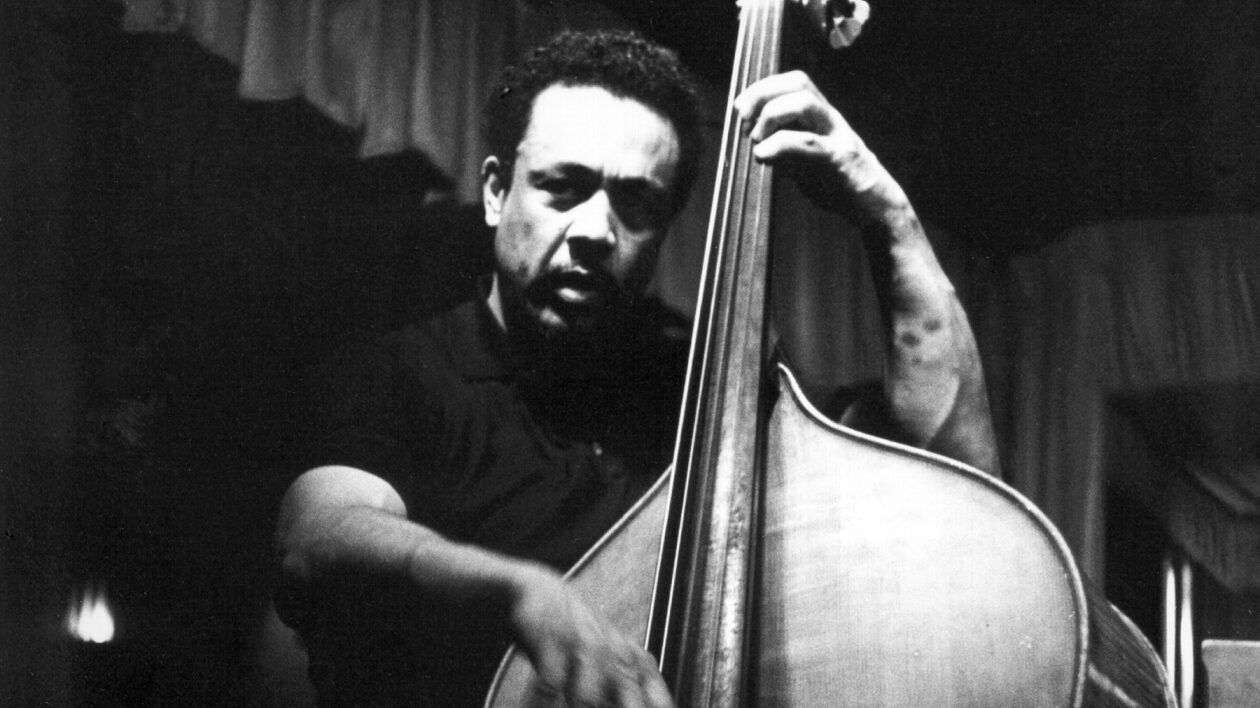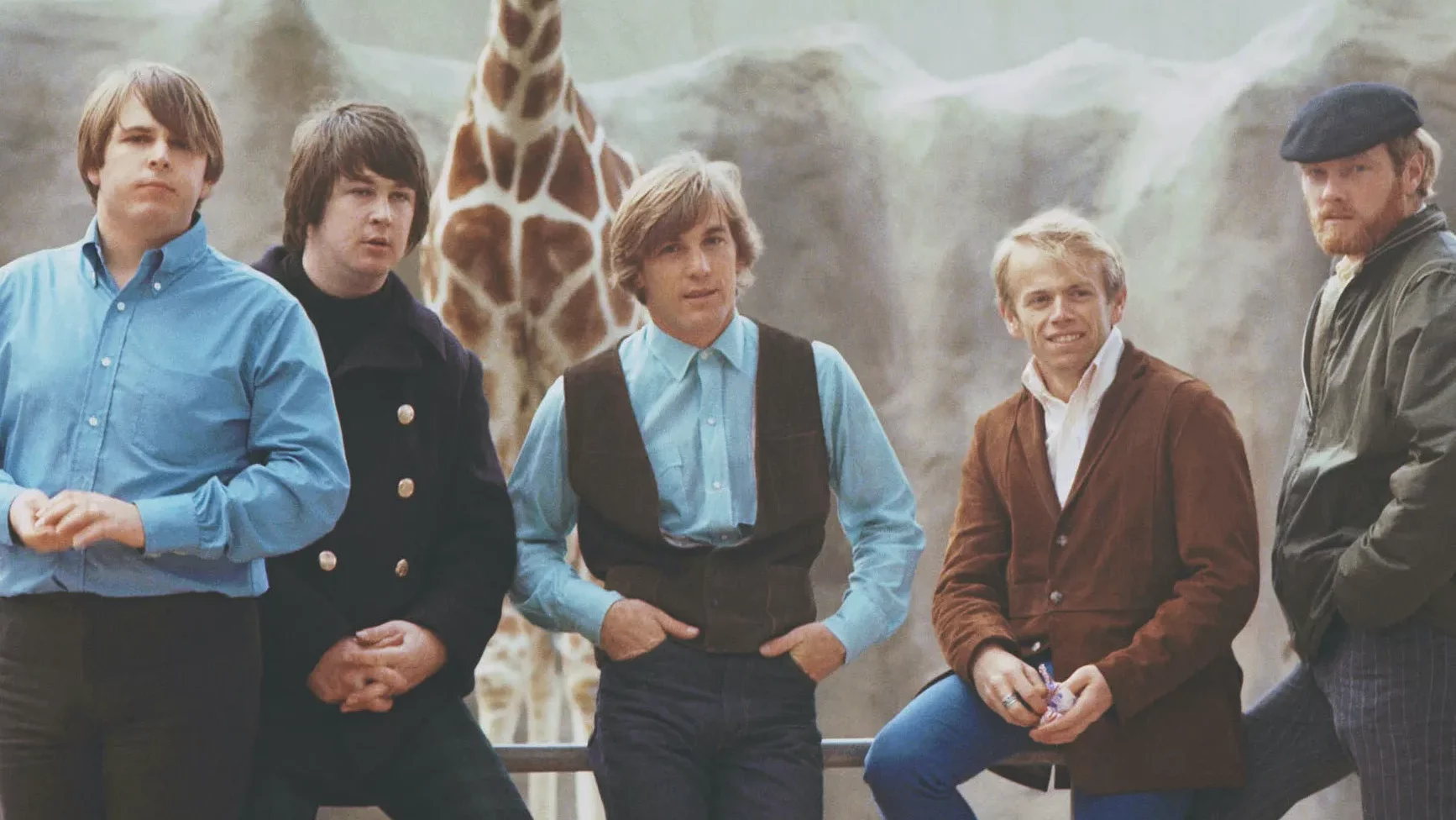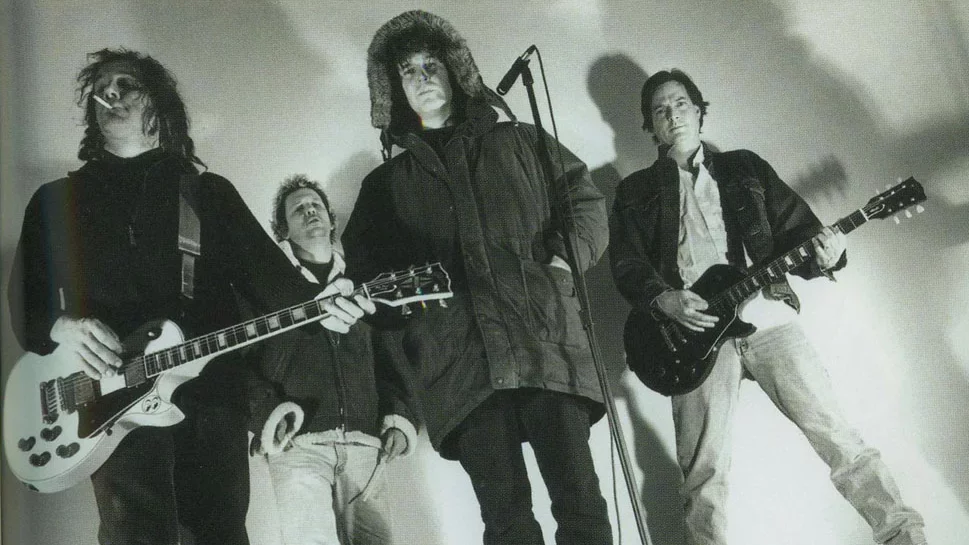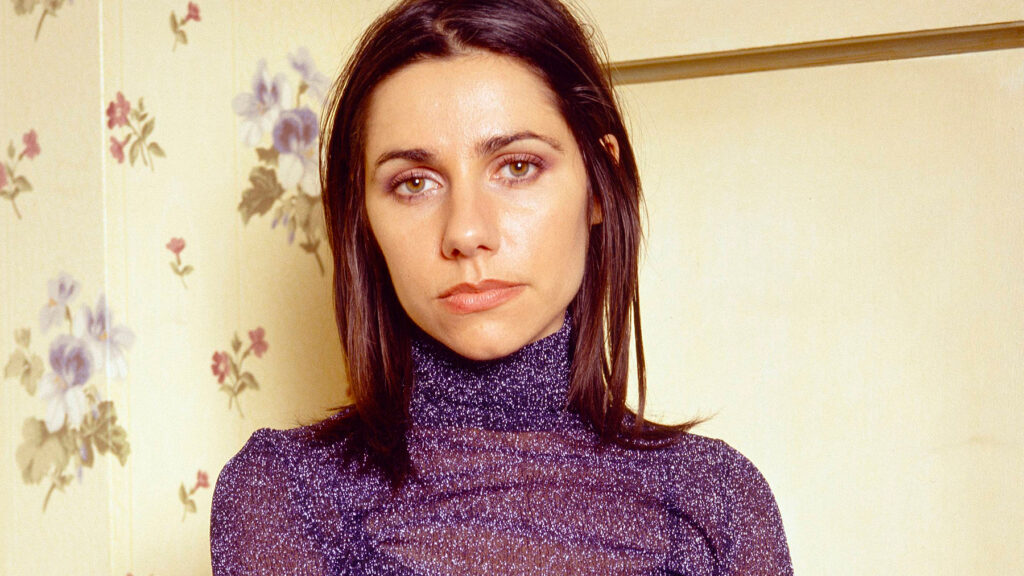
Music nerds love ranked lists. Music nerds love thoughtful commentary. Music nerds love carefully curated playlists. Catalog Crawl provides all of these things and more. In these features, Strange Currencies takes an exhaustive look at the discographies of our favorite artists – the ones who reside at the core of our music obsession.
When she first arrived on the scene in 1991, PJ Harvey must have confounded the music press of her native England. Not to say that the British were completely unfamiliar with the concept of having an idiosyncratic, expectation-shattering, visionary female musician in their midst – after all, Kate Bush had been a star for nearly fifteen years by that point – but Harvey was a truly exceptional talent from a particularly unassuming background.
Born and raised in rural Dorset, Polly Jean Harvey seemed supremely unlikely to make a career as a pop music provocateur. However, her bucolic upbringing was guided by a pair of music-loving parents, who instilled in their second child a deep love of – among other things – one of the great rock iconoclasts, Captain Beefheart. This early exposure to the avant garde, alongside formal training on multiple instruments, helped to lay a path that Polly Jean would first travel as a vocalist for the band Automatic Dlamini. While her time in that group was relatively short-lived, it proved to be a formative experience, and introduced Harvey to two of her most important collaborators, John Parish and Rob Ellis.
It was with Ellis and bassist Ian Oliver that Harvey formed the trio that would become “PJ Harvey” – initially the name of the group itself, but eventually the moniker that Polly Jean would continue to use as a solo artist. After the band’s first single – 1991’s “Dress” – became an underground hit, they signed with the label Too Pure, who released their debut LP, 1992’s Dry (which included contributions from both Oliver and his replacement, Steve Vaughan). Both Dry and its successor, 1993’s Rid of Me, were critical smashes, acclaimed for their pummeling sound and Harvey’s uncompromisingly forward lyrics.
The PJ Harvey trio disbanded prior to the sessions for 1995’s To Bring You My Love (Ellis would remain a frequent collaborator with Harvey for another decade), ultimately allowing for that record to focus more on Harvey’s songwriting. Again greeted by critical accolades, To Bring You My Love would lay the groundwork for a far more adventurous and rewarding phase of her career: one that not only allowed, but practically demanded, for each new album to represent a bold new artistic direction.
Now thirty years into her career, PJ Harvey has rarely (if ever) run afoul of critics. Over the course of nine records – plus a pair of collaborative LPs with John Parish – she has crafted one of the most consistently compelling catalogs in contemporary pop music. In the rare instances in which she may have been considered to be on a declining trajectory, Harvey has often responded with some of her bravest and most rewarding music to date.
This installment of Catalog Crawl is just one writer’s take on her remarkable body of work, but I’m hardly alone in suggesting that PJ Harvey has added upwards of half-a-dozen legitimate classics to the rock canon. While the recent issues of corresponding demo LPs for each of her proper albums have often proven revelatory (love that original version of “Let England Shake”), I have only ranked Harvey’s nine studio solo records, plus the two collaborations with John Parish.
Additionally, PJ Harvey is a rare artist who has maintained impressive longevity without also possessing an official career-spanning retrospective release. The playlist that I am presenting is my own attempt at providing such an overview. To create a satisfactorily substantial track list that also showcases the full range of Harvey’s talents, I have chosen two representatives from each of her solo records, plus one song apiece from her two co-billed albums with John Parish. Enjoy!
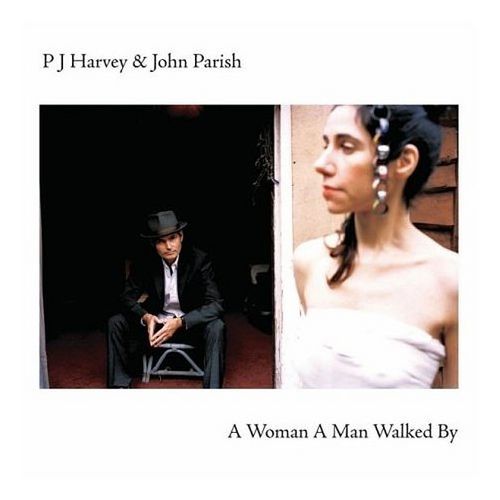
A Woman a Man Walked By (with John Parish)
2009
(6.9)
11
The second – and to date, final – co-billed release from PJ Harvey and long-time collaborator John Parish, A Woman a Man Walked By contains more of the fiery element that defined Harvey’s earlier work than the pair showed on their 1996 album, Dance Hall at Louse Point. With that said, it never quite coheres into a seamless listen in the same way that Dance Hall did. There are charming moments to be found throughout, but A Woman a Man Walked By ultimately stands as Harvey’s least essential album to date.
One for the playlist: Opener “Black Hearted Love” is the obvious highlight from this one – even if it’s the track that skews most closely to Harvey’s other work.
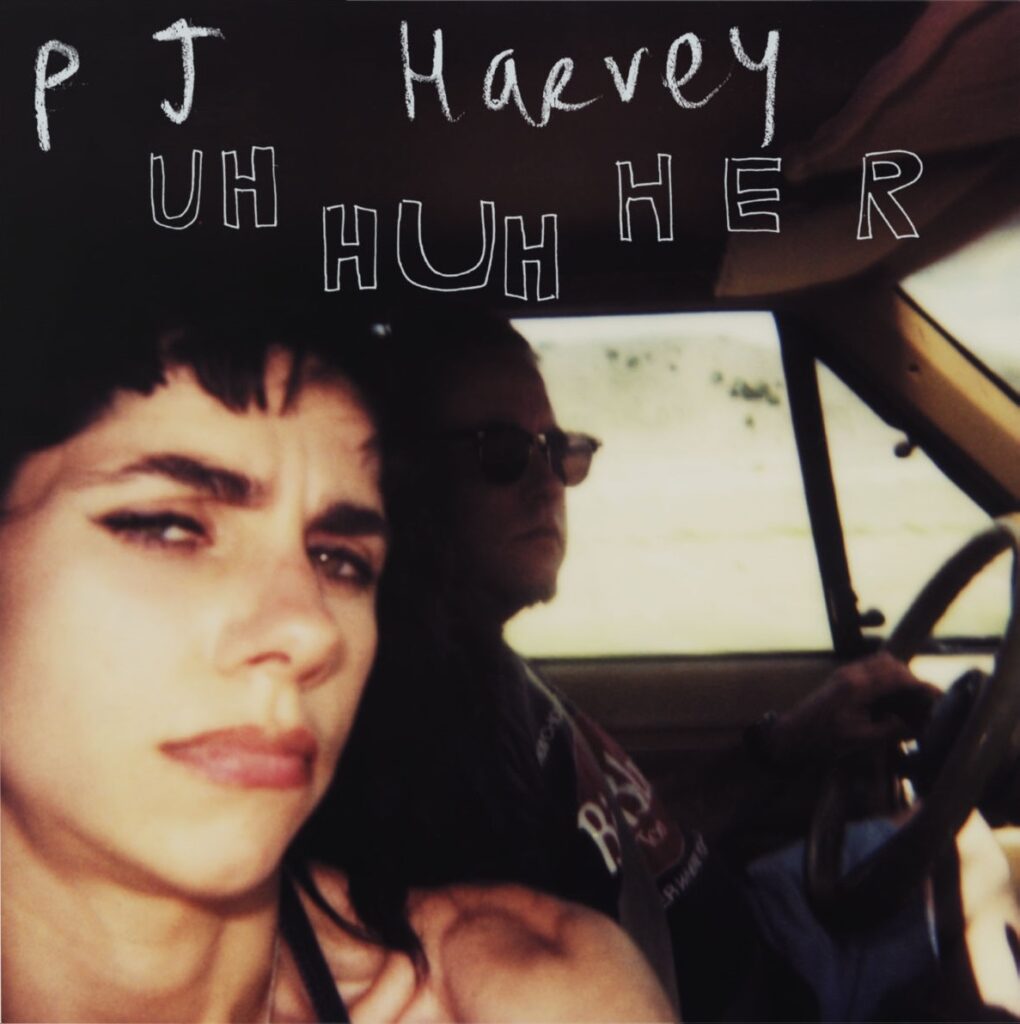
Uh Huh Her
2004
(7.2)
10
Following a decade-long stretch of undeniable classics, PJ Harvey turned in a deliberately low-key effort with 2004’s Uh Huh Her. Featuring only herself and longtime multi-instrumentalist collaborator Rob Ellis, Uh Huh Her generally trades in minimalistic arrangements, but returns (at times) to the punk-inspired fury of Harvey’s earliest records. Understandably, the album is generally regarded as one of her weakest efforts, but – aside from the fact that “weakest” is relative – there is still plenty of impressive material here.
Two for the playlist: Uh Huh Her is very much a guitar album, and few songs better display Harvey’s intuitive approach to the instrument than “The Letter.” In contrast, it’s the hypnotic marimba part that forms the core of another album highlight, “You Come Through.” Both tracks show the minimalistic approach of Uh Huh Her at its most effective.
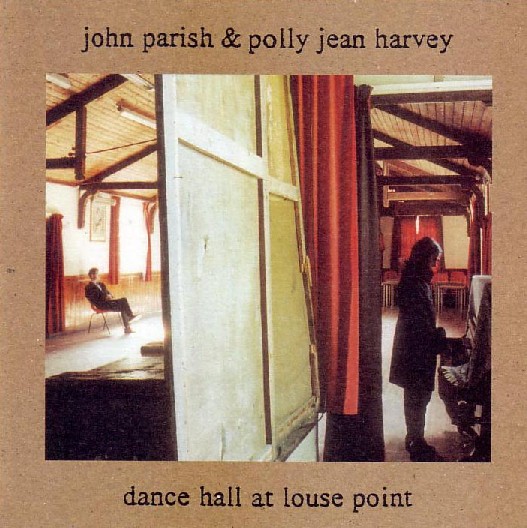
Dance Hall at Louse Point (with John Parish)
1996
(7.3)
9
A low-key release in the middle of a run of classics, PJ Harvey’s first album-length co-billing with John Parish – who had once played alongside her in Automatic Dlamini, and more recently had made significant contributions to 1995’s To Bring You My Love – is easy to overlook. Stepping back from the pummeling assaults that had characterized her first three albums – without completely abandoning their harshness – Dance Hall at Louse Point introduced nuanced shades that would inform Harvey’s subsequent work.
One for the playlist: The mostly-acoustic “That Was My Veil” is the highlight, showing a folkier influence that Harvey’s previous work had only hinted at. Parish provides some nice atmospheric flourishes, but Harvey is the clear focal point.
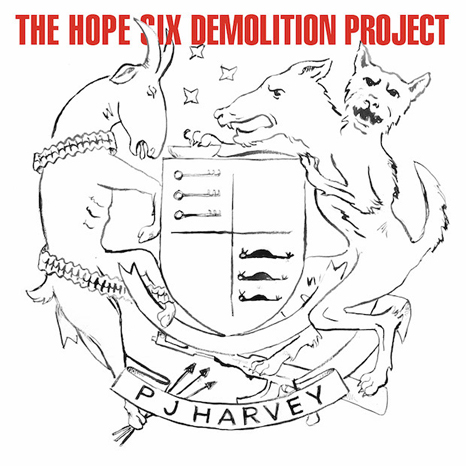
The Hope Six Demolition Project
2016
(7.5)
8
The follow-up to 2011’s remarkable Let England Shake, The Hope Six Demolition Project bears some sonic resemblance, but trades its predecessor’s historical allegory for a focus on contemporary politics. The result is arguably the most divisive record in Harvey’s catalog, not necessarily for her stances (she largely refrains from grandstanding), but instead for its lack of defined purpose. As the successor to one of her major works, its reception was more disappointing than it might have otherwise been, but the backers of Hope Six often laud it as one of Harvey’s best. I’m not there yet, but there are definitely strong moments scattered throughout this one.
Two for the playlist: Hope Six is one of those records for which the singles were well-chosen. While it doesn’t exactly scream “hit,” “The Wheel” is arguably the album’s strongest track. More controversial, “The Community of Hope” would find Harvey taking criticism for her unflattering portrayal of Washington D.C.’s Ward 7, but it is easily one of the most musically satisfying tracks on the album.
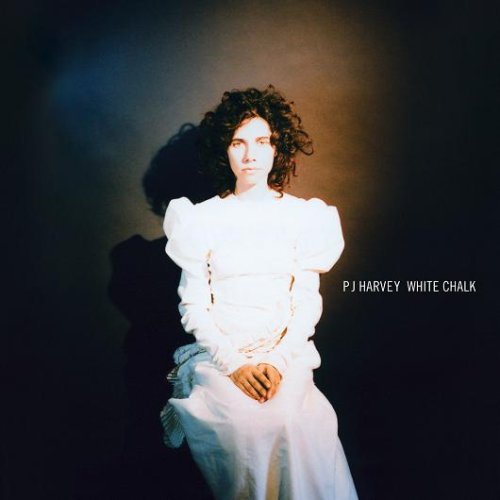
White Chalk
2007
(8.3)
7
Cold, sparse, and haunting, the chamber folk sounds of 2007’s White Chalk were – at the time of its release – unlike anything else in PJ Harvey’s catalog. Finding Harvey shifting away from using the guitar as her primary instrument, the songs on White Chalk are generally built around her skeletal piano work. And though frequent collaborators John Parish, Eric Drew Feldman, and Flood are present, the focus remains squarely on Harvey’s storytelling and high-register vocal performances. Many prominent critics were quick to dismiss it upon arrival, but White Chalk has deservedly seen its reputation improve over the fifteen years since its release.
Two for the playlist: The profound loneliness of White Chalk is perfectly introduced by its opening track, “The Devil.” Little in her previous work had hinted at anything this fragile, and it remains an arresting listen. Even better is the album’s stirring centerpiece, “When Under Ether.” The nature of the song’s insistent musical repetition leaves the emphasis on the scene-setting of Harvey’s lyrics, which provide intriguing details, but leave plenty of room for speculation.
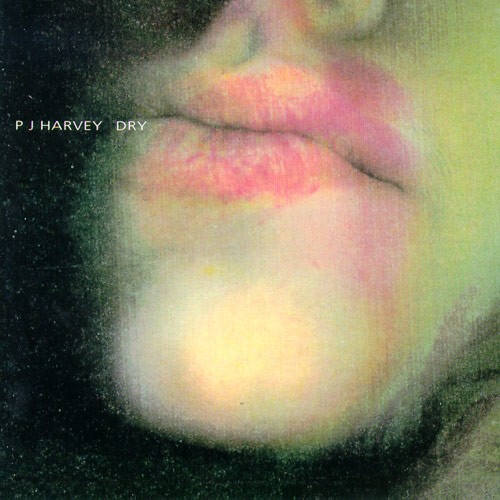
Dry
1992
(8.8)
6
Seemingly arriving out of nowhere, PJ Harvey’s 1991 debut single became an instant conversation piece, garnering critical acclaim with its uncompromising sexual openness and pummeling sound. With attention piqued across the UK, expectations were high for Harvey’s full-length debut, which arrived in the summer of 1992.
Dry proved that the hype was justified. In eleven (mostly) ferocious songs, Harvey and her backing band – Steve Vaughan (bass) and Rob Ellis (drums) – take a scorched-earth approach to the blues. It’s raw, visceral, and appropriately dry, but it’s far from just sizzle. Listening to the album’s demo recordings, the depth and substance of Harvey’s “arrived fully-formed” songwriting is laid bare, but when added to the forceful rhythmic backing, it becomes powerfully intense. Little like it had ever been heard before, but in the truest testament to its impact, Dry would spawn legions of imitators.
Two for the playlist: The aforementioned debut single, “Dress” remains a stunner, holding the same seething intensity that it did when it arrived over three decades ago. Every bit as impressive – and fierce – was its follow-up, “Sheela-Na-Gig.” I’m not generally inclined to pick singles as both representatives, but this pair of tracks still stand among Harvey’s absolute high-water marks.
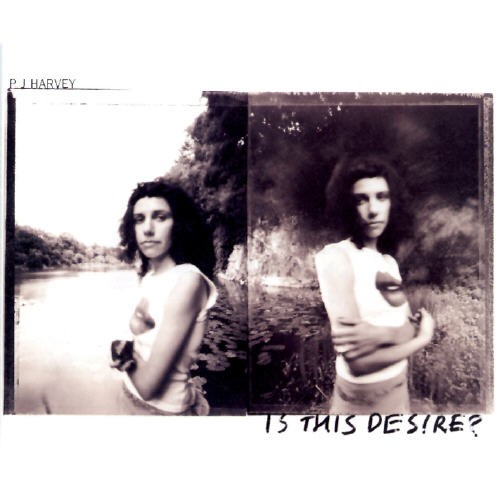
Is This Desire?
1998
(9.1)
5
The singer-songwriter impulses that had always stood at the edges of PJ Harvey’s earlier work truly came to the forefront on 1998’s outstanding Is This Desire? The product of tumultuous sessions, the album may not have had the immediate impact of its predecessors, but it has rightfully come to be seen as a dark horse favorite in Harvey’s discography.
Is This Desire? finds Harvey painting in far more nuanced shades than she had on her previous records, foreshadowing her subsequent work, and solidifying her position as one of the best songwriters of her generation. The instrumental contributions of a talented cast – John Parish, Eric Drew Feldman, Mick Harvey, and Rob Ellis (who returned to Harvey’s band after sitting out on To Bring You My Love) – treat Harvey’s compositions with sympathetic subtlety, making for a record that takes time to reveal its charm.
Two for the playlist: Widely considered to be one of Harvey’s finest songs, first single “A Perfect Day Elise” is a no-brainer for inclusion here. It’s one of the most immediate tracks on the album, and an easy highlight. At the other end of the sonic spectrum is the atmospheric “The River.” Already a stunner, the flourish of Terry Edwards’ distant trumpet makes for an impactful coda.
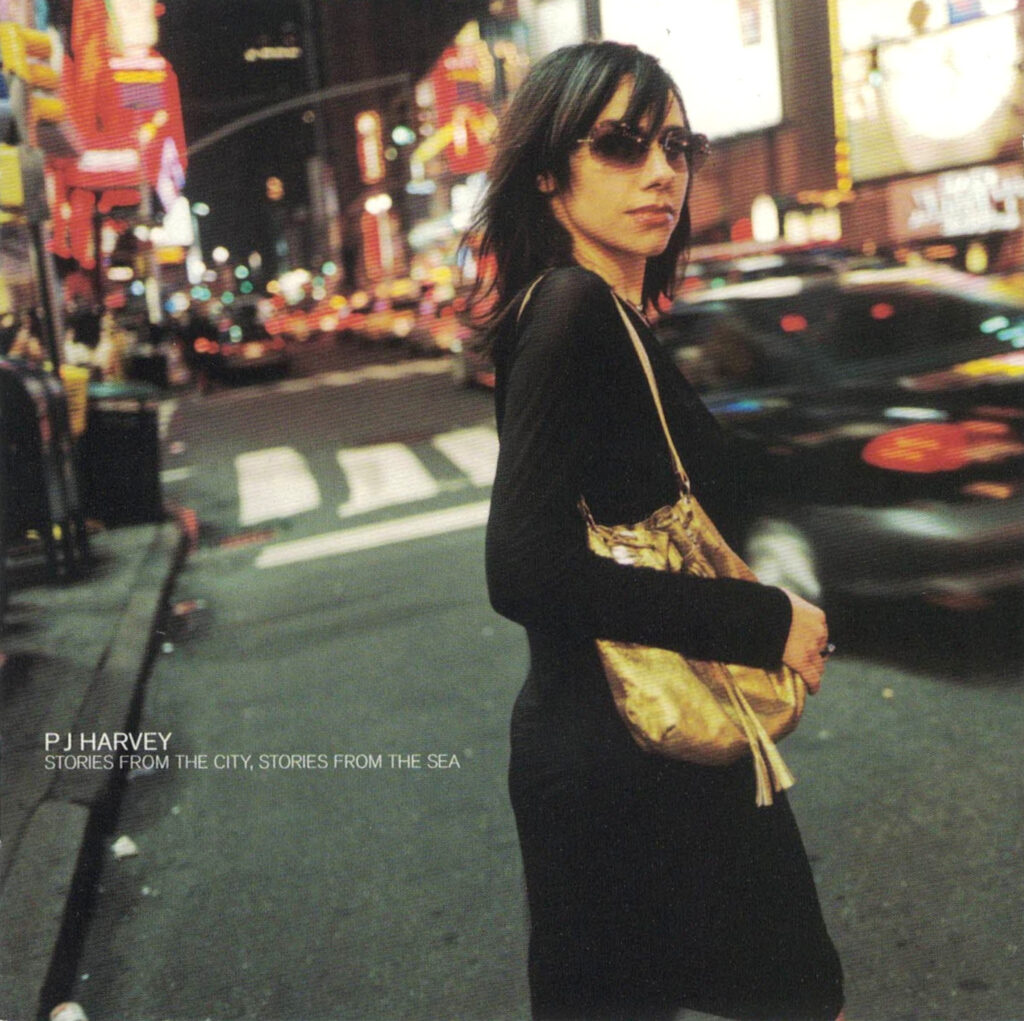
Stories From the City, Stories From the Sea
2000
(9.2)
4
Widely regarded as the most accessible album in PJ Harvey’s catalog, 2000’s Stories From the City, Stories From the Sea is arrestingly direct. A refinement of the path taken on Is This Desire?, the record was a hit with critics from the outset, but it has aged as well as anything in Harvey’s catalog.
A collaboration between Harvey and long-time accomplices Rob Ellis and Mick Harvey – with Radiohead’s Thom Yorke standing in on three tracks – Stories often displays an intimacy that would reach full fruition on her subsequent works. However, there are plenty of moments of chugging urgency throughout – albeit ones that dial back the primal intensity of Harvey’s earliest releases. All things considered, it may be the best place for newcomers to start.
Two for the playlist: Lead single “Good Fortune” is arguably the catchiest track in PJ Harvey’s discography, with its whirling vocal part making one of her best hooks. Excluding it would be a mistake. This playlist also needs a closer, and the atmospheric “We Float” is easily one of Harvey’s best.
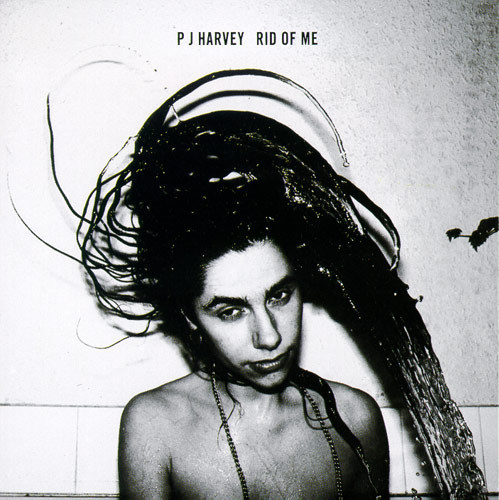
Rid of Me
1993
(9.3)
3
Absolutely no sophomore slump here. The second and final album to feature the trio of PJ Harvey, Steve Vaughan, and Rob Ellis – the latter would remain a key collaborator with Harvey through 2004’s Uh Huh Her – Rid of Me proved that Dry was no mere flash in the pan. Improving on the debut in virtually every way, Rid of Me primarily benefitted from Harvey’s considerable growth as a songwriter. There’s nary a weak second to be found on the album, let alone a single track that could be considered a lowlight.
Sonically, Rid of Me is defined by the bare-bones production of Steve Albini. The stark, slaughterhouse aesthetic often recalls Albini’s work on Pixies’ landmark Surfer Rosa – a provocative black and white album cover only furthers this connection – which merely adds to the raw intensity of the material. If she had stopped here, just two albums in, one could argue that PJ Harvey had already done enough to establish herself as a legend.
Two for the playlist: There are few songs in the rock canon that pack a more visceral punch than the opening title track, “Rid of Me.” The best demonstration of the dynamic range provided by Albini’s production, the song’s chorus never loses its capacity to shock, no matter how many times you hear it. Nearly as powerful, the sexual fury of lead single, “50ft Queenie” is another stunner, both in its musical intensity and uncompromising lyrical ferocity.
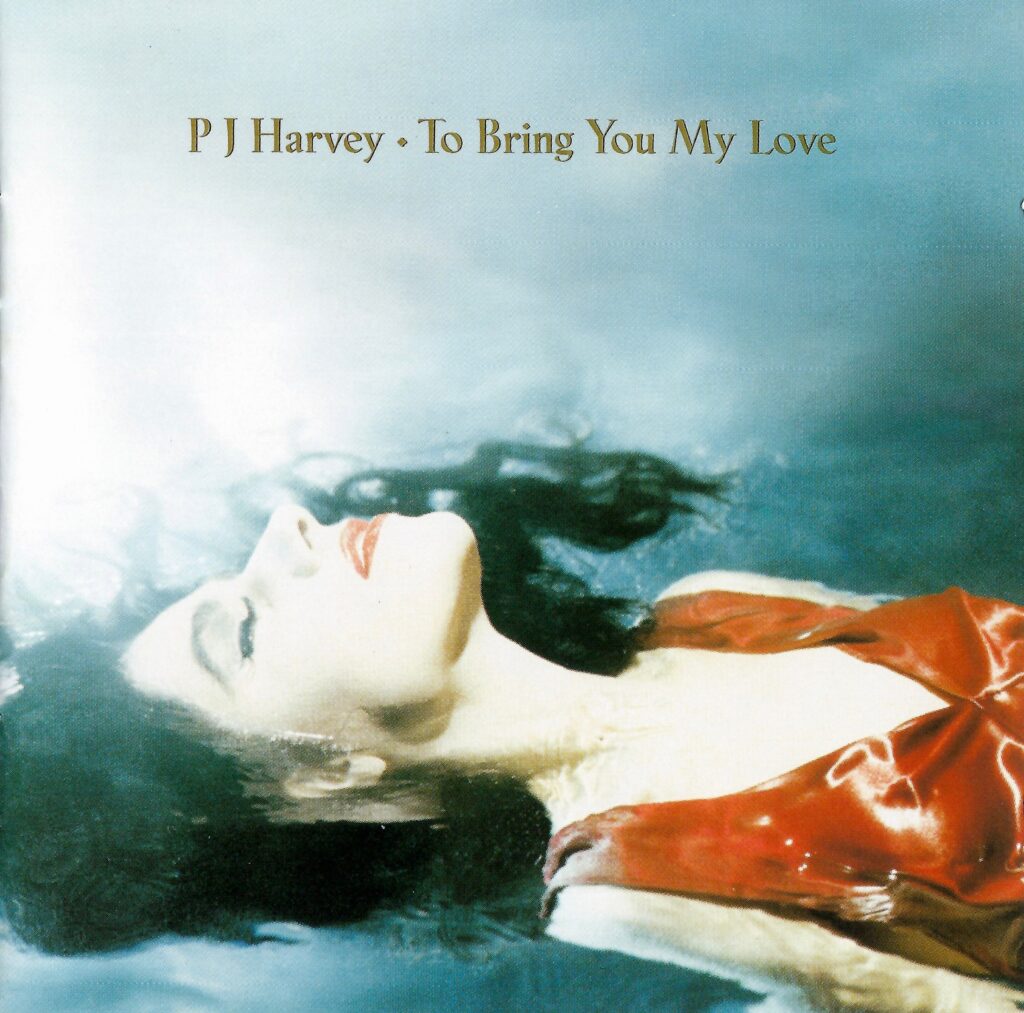
To Bring You My Love
1995
(9.5)
2
The guiding spirits of PJ Harvey’s remarkable third album are both plentiful and identifiable. To start, there’s Captain Beefheart: a critical early influence on her work, and to whom multiple references – both sly and overt – are made throughout To Bring You My Love. Next, there’s Nick Cave: the then-current crown prince of all things dark and blues-obsessed – and whom Harvey would enter into a relationship with following this record. Then, there’s Patti Smith: a reference point for lazy critics from the outset of Harvey’s career, but whose influence clearly hovers over several of the album’s most impactful moments.
Despite the omnipresence of these influences – among several others – To Bring You My Love stands as nothing less than an astounding confirmation of PJ Harvey’s singular artistry. What separates it ever-so-slightly from several closely-rated entries in her catalog is the fact that it arrived at a point of perfect equilibrium in her career. Containing plenty of the thrashing, feral quality of Dry and Rid of Me, the album also thoroughly displays the nuanced touch that would ultimately make Harvey far more than just an intriguing one-act-wonder.
Depending on the day, I could make an argument that any of the top five albums on this list represent the peak of PJ Harvey’s illustrious career, and this record is no exception. If one truly wants a single release release that provides a wholistic overview of everything that makes her such a titanic figure in modern music, To Bring You My Love is unquestionably that album.
Two for the playlist: Going slightly off-the-board here, if only because I’m not quite as enamored with “Long Snake Moan” as most PJ Harvey fans seem to be. As I imagine it was for many others, “Down By the Water” was the first PJ Harvey song that I ever heard, so it’s a must for inclusion. So too is “Send His Love To Me” – one of Harvey’s finest tracks, and a song that seems to invite comparisons to the aforementioned Patti Smith.
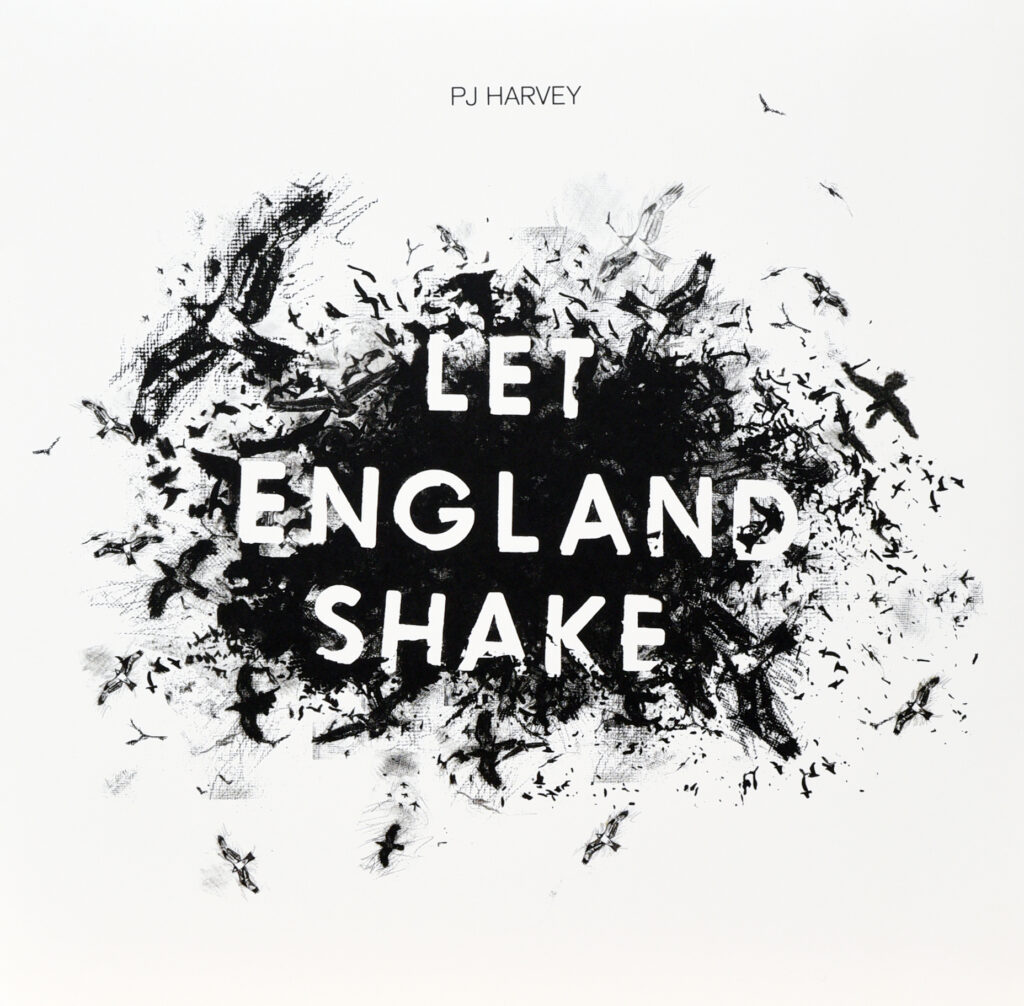
Let England Shake
2011
(9.6)
1
Harry Patch – widely recognized as the last survivor to have fought in the trenches of World War I – died in July 2009. The 111-year-old veteran’s funeral was a national event, broadcast on television and radio across his native England, and attended by members of the royal family. Patch’s death closed the books on an era of history that left a permanent scar on the psyche of both the men and nations that fought in what had once, optimistically, been referred to as “the war to end all wars.”
Patch demanded that no guns be used during his funeral – even ceremonial weapons were prohibited. In his later life, Patch had become a pacifist, frequently speaking out against the kind of jingoistic nationalism that had led he and his brethren into the face of unspeakable terror. Tellingly, the theme of his funeral was “Peace and Reconciliation.”
As a Briton, it’s hard to believe that PJ Harvey wouldn’t have been at least somewhat moved by Harry Patch’s passing. After all, even the notoriously-cynical Radiohead recorded a tribute to Patch shortly after his death. It’s the ghosts of Patch, the millions killed in the Great War, and (especially) the millions who fought and survived, that would haunt each and every corner of Harvey’s next album.
Let England Shake is neither an easy or comfortable listen, nor was it intended to be. Harvey takes a documentarian’s approach, detailing bullet-ridden landscapes, ground stained with blood, and soldiers reduced to “lumps of meat.” Disembodied voices (“Bobby…”) and instruments (“Regimental March”) blow in from similarly hellish dimensions, all adding to an already disorienting listening experience.
And in the end, that’s what the best albums often are: listening experiences. Yes, To Bring You My Love provides the best overview of PJ Harvey’s artistic range, but Let England Shake is her masterpiece.
Two for the playlist: Setting a compelling scene – and borrowing from The Four Lads’ “Istanbul (Not Constantinople)” – “Let England Shake” is a striking piece of music. Continuing in that spectral vein, “The Glorious Land” matches its bleak lyrical imagery with a powerful militaristic instrumental backing.


